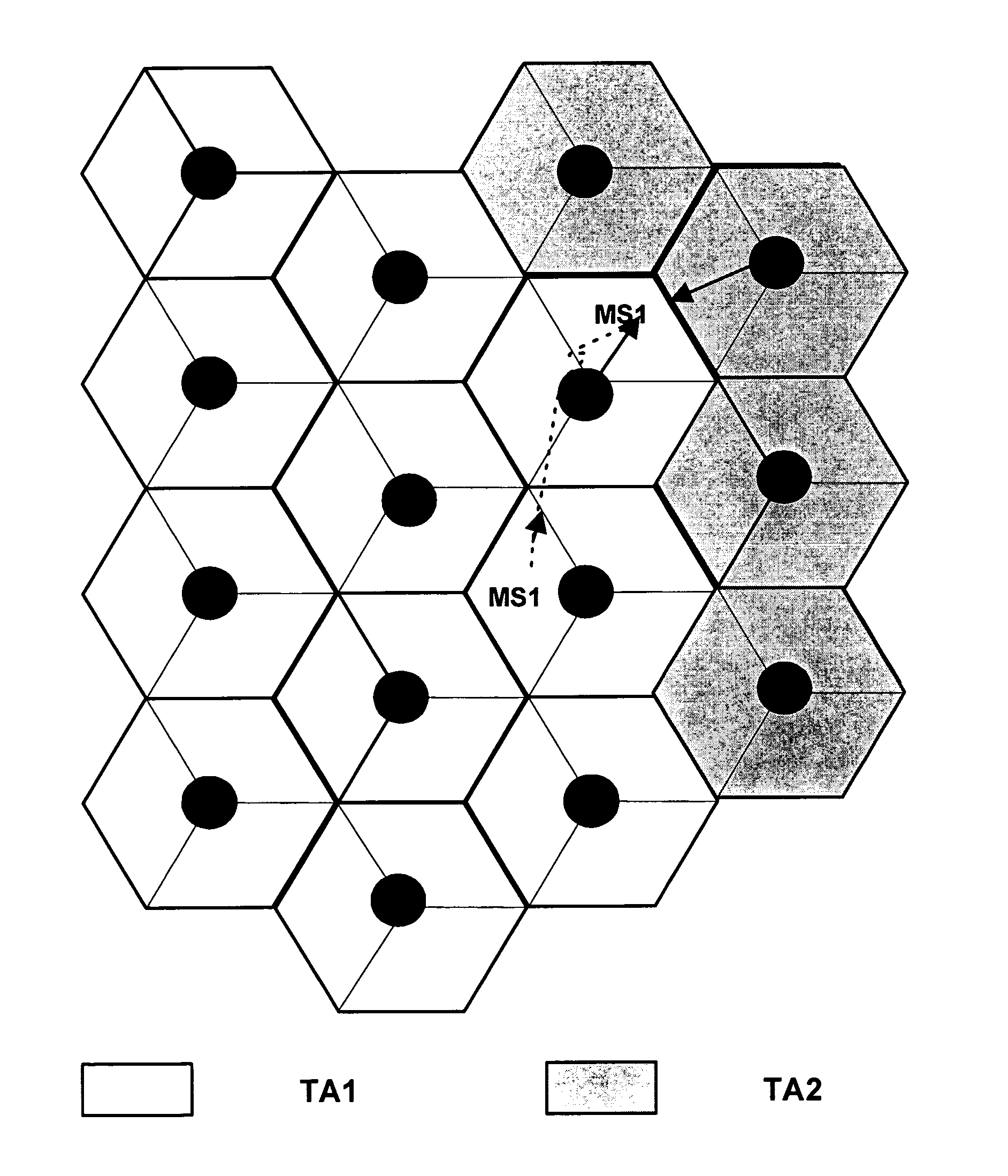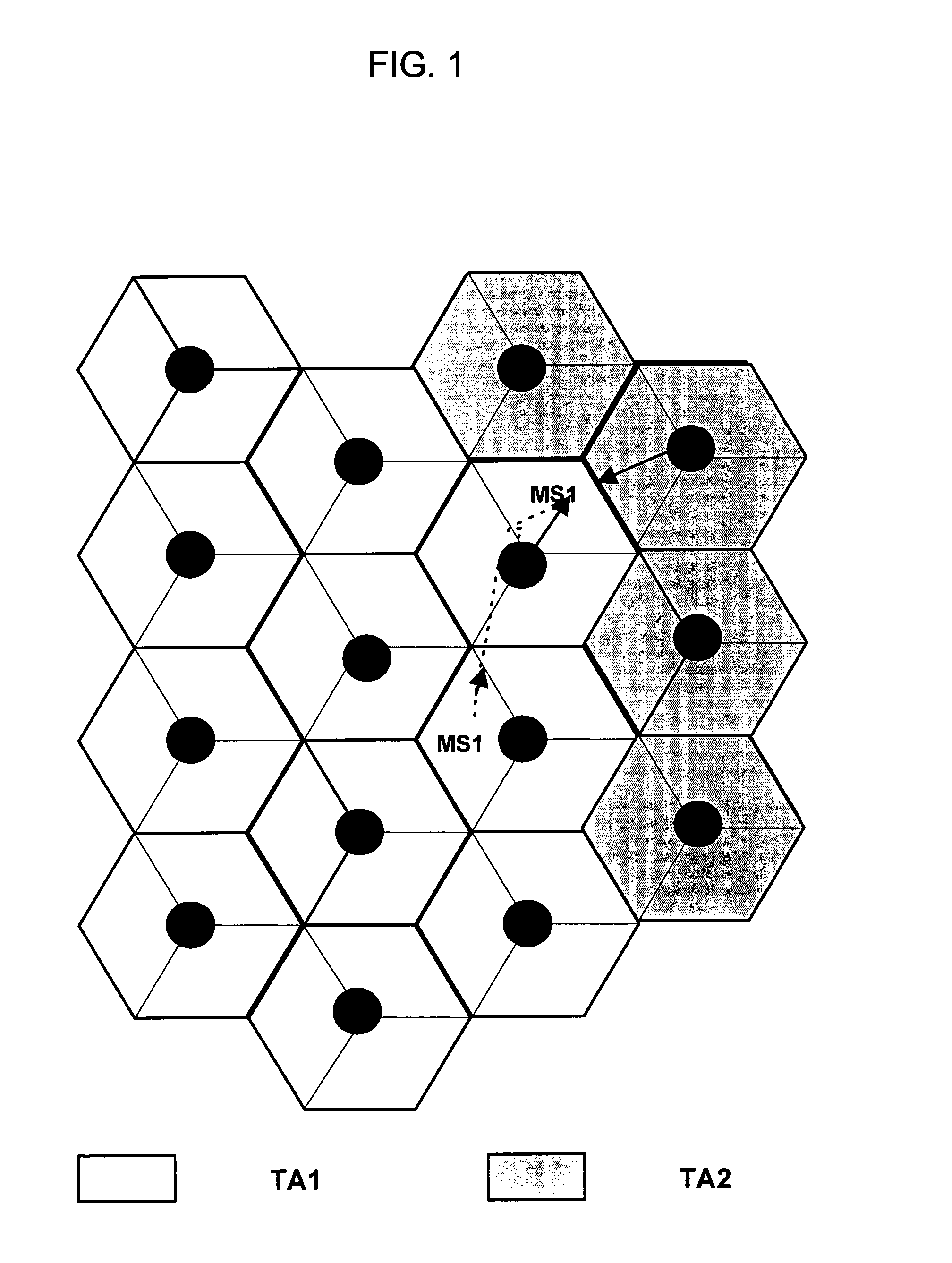Methods for tracking users in a communication network
a communication network and user technology, applied in the field of communication network user tracking, can solve the problems of significant loss in spectral efficiency for the network operator, loss in the quality of service perceived by a bcmcs/ptt subscriber, and not expected to be the predominant operating mode of bcmcs/ptt, etc., to achieve the effect of conserving radio resources
- Summary
- Abstract
- Description
- Claims
- Application Information
AI Technical Summary
Benefits of technology
Problems solved by technology
Method used
Image
Examples
Embodiment Construction
[0016] Although the following description is described as based on a generic wireless communication network or system supporting Broadcast-Multicast services (BCMCS), and will be described in this exemplary context, it should be noted that the exemplary embodiments shown and described herein are meant to be illustrative only and not limiting in any way. As such, various modifications will be apparent to those skilled in the art for application to wireless communication systems or networks based on 3G-1x EV-DO, 3G-1x EV-DV and UMTS technologies that may currently support or be adapted to support BCMCS, for example, and are contemplated by the teachings herein.
[0017] Additionally where used below, the term ‘user’ may be considered synonymous to user equipment, subscriber, BCMCS subscriber, mobile station, remote station, access terminal, etc., and describes a remote user of wireless resources in a wireless communication network. A user may also be occasionally referred to as a receiv...
PUM
 Login to View More
Login to View More Abstract
Description
Claims
Application Information
 Login to View More
Login to View More - R&D
- Intellectual Property
- Life Sciences
- Materials
- Tech Scout
- Unparalleled Data Quality
- Higher Quality Content
- 60% Fewer Hallucinations
Browse by: Latest US Patents, China's latest patents, Technical Efficacy Thesaurus, Application Domain, Technology Topic, Popular Technical Reports.
© 2025 PatSnap. All rights reserved.Legal|Privacy policy|Modern Slavery Act Transparency Statement|Sitemap|About US| Contact US: help@patsnap.com


